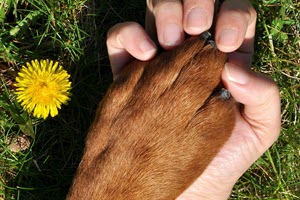It makes sense that animal organizations are the second most popular type of organization people want to support—right behind youth and family causes, and tied with medical research organizations. After all, we’ve all gotten sucked into a black hole of cute puppies and kittens on the internet, only to emerge hours later, dazed and slightly confused.
That doesn’t mean that raising funds for your animal organization is easy! You’re doing amazing work for animals, and you want to raise as much as you can to support your mission.
We put together some charity donation form best practices to help you raise more money for animals!
- Using Storytelling in Your Appeal
- Branding, Branding, Branding
- Tech Can Help You Raise More
- Get Creative When Communicating Donor Impact
- Make Your ‘Thank-You’ Mean More
- Promote Your Donation Page
Using Storytelling in Your Appeal
There’s nothing more powerful than a story to help you connect with your audience. Luckily, animal shelters tend to have some great stories!
One of the most compelling stories that animal shelters can use is a heartstrings-tugging before -and-after. Whether you choose one animal’s story to highlight all year, or you highlight a different story every month, this is a great way to communicate impact to potential donors and encourage sharing. The dodo has endless examples of these types of stories… and the fact that the dodo has garnered well over a billion views on Facebook alone is proof of their amazing social potential.
The dodo’s popularity brings up another excellent point: the importance of video in storytelling. Video has long been the most popular way for audiences to consume media, and that’s not going to change any time soon. In fact, Zenith Media predicted the average viewer will watch 100 minutes of video a day in 2021!
The good news is you don’t need to hire a videographer or buy expensive equipment to make compelling videos. You can easily shoot and edit professional-grade video right from your smartphone, and it doesn’t even have to be perfect!
Similarly, you can use your smartphone to take high-quality before and after pictures of more serious cases and add those pictures to a slideshow on your donation page. Using before and after photos instead of just the sad “before” photos can be more compelling because it conveys hope, and therefore does a better job of showing how your organization can make a difference with a potential donor’s funds.
One final way to tell a quick, visual story on your donation page is by using a fundraising thermometer. While it doesn’t show your organization’s mission, it does tell the story of where your organization is in the fundraising process, and how much you still need to raise to support your mission.
Branding, Branding, Branding
We emphasize the importance of branding for any organization, and that’s because it works! Not only do donations tend to be 38% larger when they’re made on a branded form, but your supporters are also 70% more likely to make a second donation too.
Luckily, branding your form doesn’t have to be labor-intensive. In fact, you can easily add your logo, custom images, and videos with Qgiv’s fundraising platform. You can even change the color scheme of your forms and thermometer in minutes!
While taking the time to brand your form is important for any organization, it’s even more important if you’re a branch of a larger organization, such as the SPCA or Humane Society.
Tech Can Help You Raise More
One of the many benefits of technology is that we no longer have to guess how to make our donation forms more effective. We can try things and let the data speak for itself!
Here are some key things you’ll want to include when trying to raise money for animals. We already know they work!
1. Make it easy for donors to find out if their gift is eligible for a match.
While we most commonly think of matching gifts as coming from large organizations, plenty of individuals throw their support behind matching gifts as well. Your donors will be encouraged to give more if they know their donation will go further!
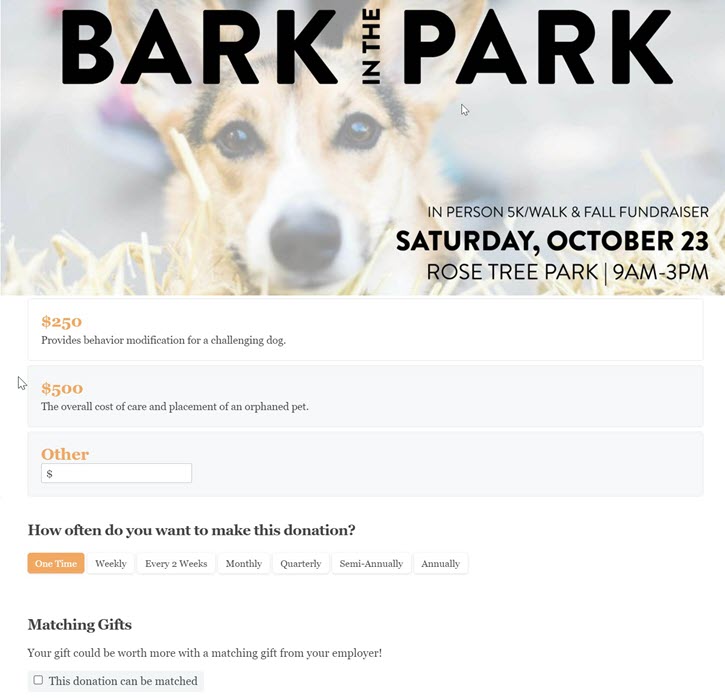
2. Offer a way for donors to offset processing fees.
Using Qgiv’s platform, you only need a quick click of the mouse to enable GiftAssist. Even better, you can set up conditional thank-you emails to help acknowledge those who used GiftAssist to donate more!
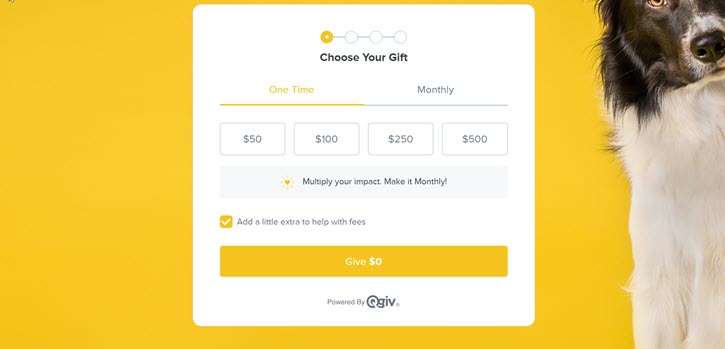
3. Mobile-friendliness matters.
Over 50% of people visit your nonprofit’s website on their phones. Imagine if they try to donate and the form doesn’t work on their phones. Do you think they’ll go grab their laptop or switch to their desktop? Unlikely. Make sure your donation page uses responsive design so you can connect with mobile donors the first time.
4. Recurring donation prompts are the future.
Not only do recurring donors tend to donate five times the amount of non-recurring donors throughout their lifetime, they also have a 90% retention rate. That’s almost double the average donor retention rate of 46%!
The Animal Protection Society of Durham does a great job of incorporating these elements into their online donation forms, and it makes all the difference in the world!
Get Creative When Communicating Donor Impact
Gone are the days of the generic impact statement. Your donors already know you want to help animals; now’s your chance to tell them exactly how you plan to do it!
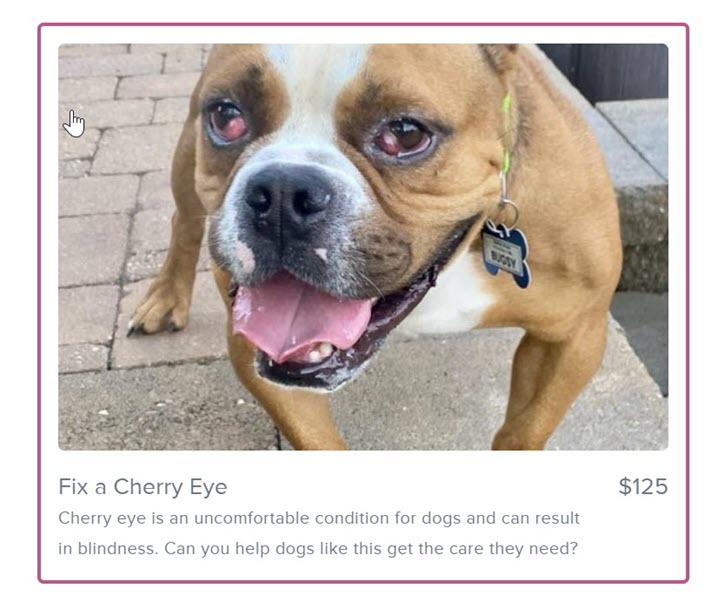
This means you should use separate forms (you get unlimited donation forms with Qgiv) for your annual fundraising campaigns and special campaigns, such as a new building fund. Each form should communicate the impact that a particular donation will make.
You aren’t limited to text impact statements either. For example, if you’re trying to raise funds for surgery for a rescued animal, use a video to communicate the animal’s current state and how exactly donations will make his or her life better. You can post updates on the donation page and social media to show his or her progress, which will encourage even more donations.
You can also show impact using the “virtual food drive” format, like The Sharing Center does for their food bank. It’s easy for animal shelters to set up a similar drive to support their needs. Instead of listing out food and pantry necessities for people, you’re listing the necessities for the furry, feathery, and scaly friends in our lives!
Your categories might include food, medical needs (like spay and neuter services), training (which can range from potty pads to obedience classes), comfort (blankets and dog beds), and enrichment (which includes everything from toys to leashes and harnesses for walks). This is an easy way to help donors see how their donations help. You can also include a “Greatest Need” section for donors who want their donation to meet your shelter’s most urgent need first.
The most important thing is to make an emotional connection with potential donors. You want them to see where their donation will help the animals your organization serves.
Make Your ‘Thank-You’ Mean More
Showing your donors love is always important, but your thank-you pages and emails can do so much more! You can include social sharing buttons to encourage your viewers to share on Facebook and X, and you can include graphics for them to share on Instagram.
You can also include topics for them to make videos for YouTube and TikTok, such as encouraging donors to record telling their rescue’s story.

With your donors’ permission, you can even use those videos on your social media to increase donations!
You can also add “umpph!” to your thank-yous by customizing them based on how the donor gave. With Qgiv’s fundraising platform, you can customize your thank-you emails based on whether or not your donor chose to cover processing fees, or if they chose to dedicate their donation.
You can even customize your emails for recurring donors! After all, you don’t want your recurring donors to get the same generic message every time, do you? By updating the thank-you email every month, you can not only highlight new animals your organization has helped (and thus, continue to show donors how their donations make an impact), but you can also use that to promote any new urgent causes, advocacy campaigns, or volunteer opportunities.
Additionally, you can use your thank-you page and emails to highlight additional ways donors can give. Will you take the opened bag of food that a picky eater didn’t like? Are you in need of old sheets and towels to help clean new rescues up and keep them comfy? Your donors won’t always think about these things unless you tell them, so let them know how else they can help!
Essentially, you can use your thank-you pages and emails to both thank your donors and help them get more involved with a cause that already matters to them.
Promote Your Donation Page
Here’s where animal shelters have a step up on other organizations: animal content is already hugely popular and shareable on the internet! Here are some ways you can capitalize on that while raising more donations:
1. Text campaigns.
Text messages have the highest open rates (98%) of any form of outbound communication. Make the most of it by including a link to a YouTube video that highlights your biggest success stories over the past year. Follow that with a quick ask and link to a donation page.
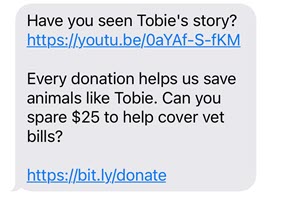
It’s an easy way to share an impact statement without needing to use many words.
2. Social media.
While we’ve already given you some ideas for social media promotions through this article, there are endless ways you can encourage donations through social media. The easiest may be to post a simple composite image with a before and after shot, followed by a link for a donation. Canva is a great, free tool for this.
A slightly more time-consuming (but very powerful) example might include taking followers along on a rescue’s journey back to health. You could start with a video showing the original condition of the animal, and then follow those up daily/weekly (depending on severity) updates until the revised and healthy pet finds their new fur-ever home! This is a great way to not only increase donations but also help get special needs animals adopted!
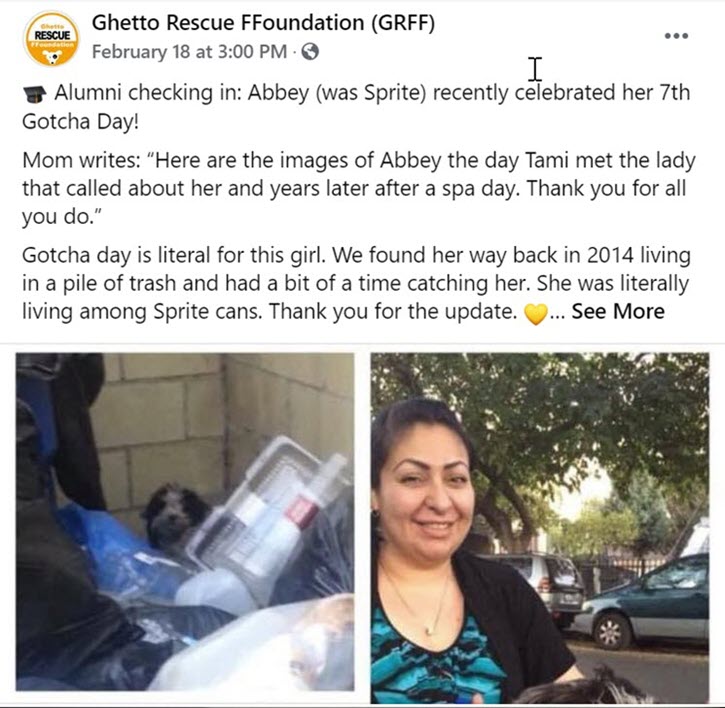
From there, you can create user-generated content campaigns that encourage users to show off their beloved pets (let’s face it: we all like to do it) via picture or video. Supporters then post to their social media accounts with a link back to your donation page to raise money for animals! It’s a great way to both increase donations and raise awareness for your organization, even if it will take more hands-on guidance and moderation from your team. But realistically: how cute would a TikTok campaign like this be?!
3. Email.
Last, but not least, we have email. Email gets a bad rap, but the reality that email marketing is still an important and effective component of any fundraising campaign. And it has the highest ROI (return on investment) of any other marketing channel!
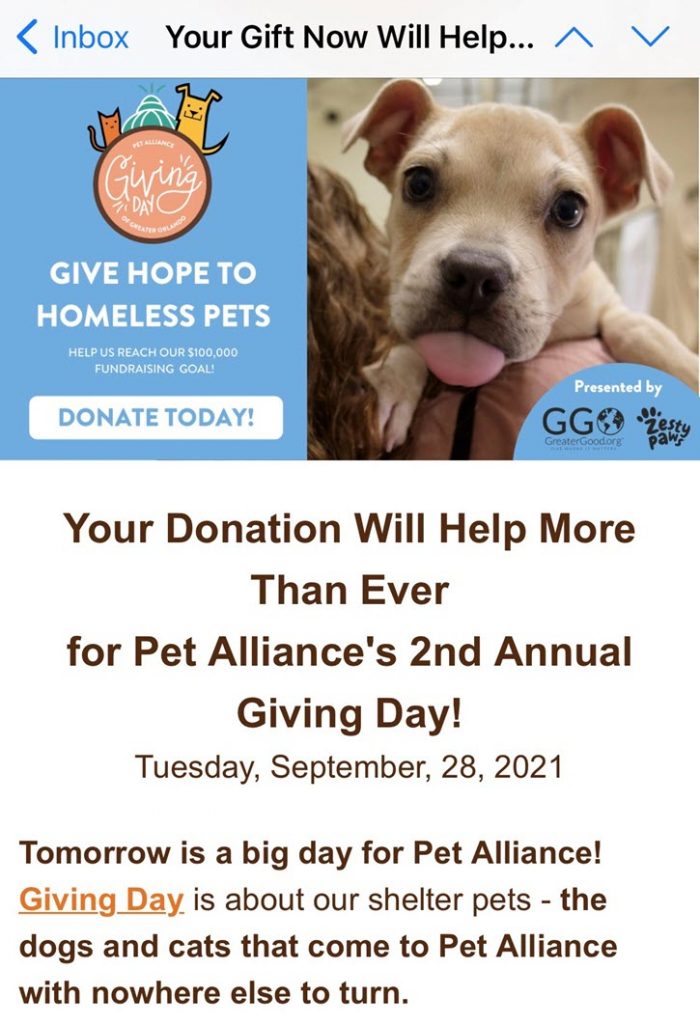
While the thank-you emails we mentioned above are part of this, there’s so much you can do! You can reach out with organization success stories, volunteer opportunities, you name it! Just make sure you have the donate button prominently displayed in your email template, paired with a short compelling impact statement.
Final Thoughts to Help You Raise Money for Animals
If you work for an animal organization, you already work hard every day to help the animals in your community. We hope this article helps make your fundraising work a little easier! Here are some additional resources to help you on your way:
- Animal Shelter Fundraising Ideas
- Effective Animal Shelter Fundraising through Social Media
- Mission: Possible—Turn One-Time Donors into Recurring Donors
If you’re ready to raise more, schedule a demo to learn more about our fundraising platform!








